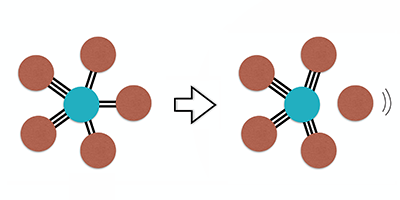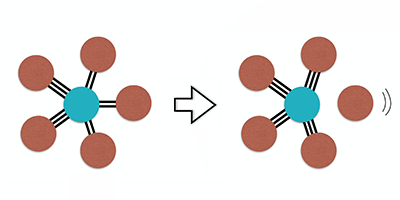Patchy Particles without the Patches
Patchy colloids are colloidal suspensions of particles that have small, sticky interaction “patches” on their surfaces. The patches can be made by grafting single DNA strands to colloid particles that bind selectively to other particles with complementary DNA strands. This makes them promising self-assembly systems for realizing materials with well-defined structures and functions. However, precision of the assembly process is limited by the difficulty in controlling both the placement of DNA patches and “valency” (the number of each colloid’s binding partners). Now, a team led by Daan Frenkel at the University of Cambridge, UK, has proposed a way to eliminate the need for precision placement and valency control by using, instead of static patches, mobile DNA strands.
The researchers simulated a colloidal DNA system containing two particle types, and , coated with complementary DNA strands (linkers). Like previously investigated systems, and could bind whenever they were close enough for DNA hybridization to occur. However, in the authors’ scheme the grafting point was not fixed, but free to move over the colloids’ surface. The result was a system where the - attractive interaction strength depended on the number of linkers on each colloid (more than one linker could be used to bind two colloids) and on the number of binding partners. If a repulsive force of sufficient strength was present, the number of particles bound to , i.e., the valency, was low. The valency varied as the repulsive interaction between the colloids was changed, which could be done by varying the temperature, salt concentration, or colloid coating. If realized experimentally, this method may lead to more flexible ways of designing colloids with tailored properties.
This research is published in Physical Review Letters.
–Katherine Wright





